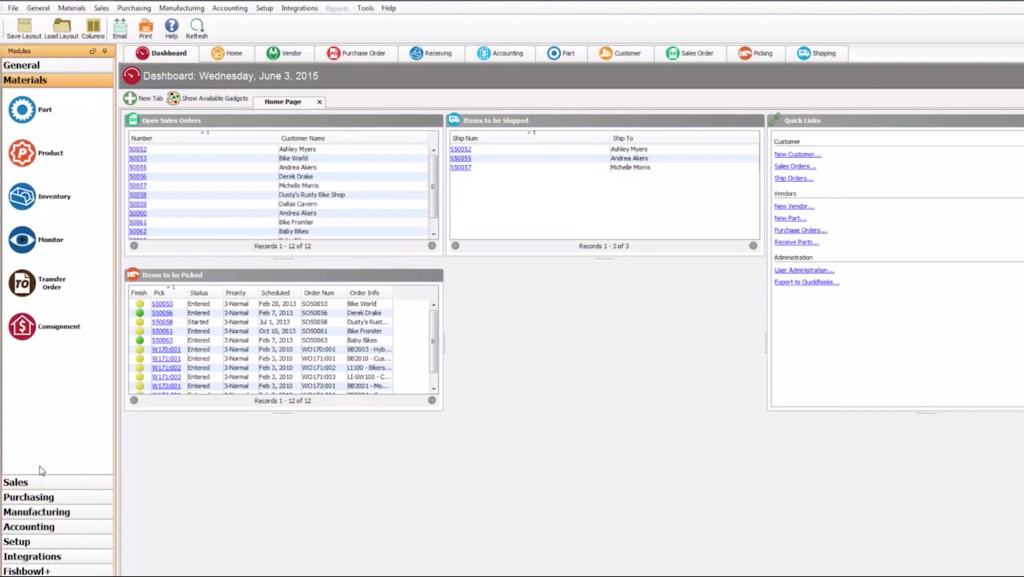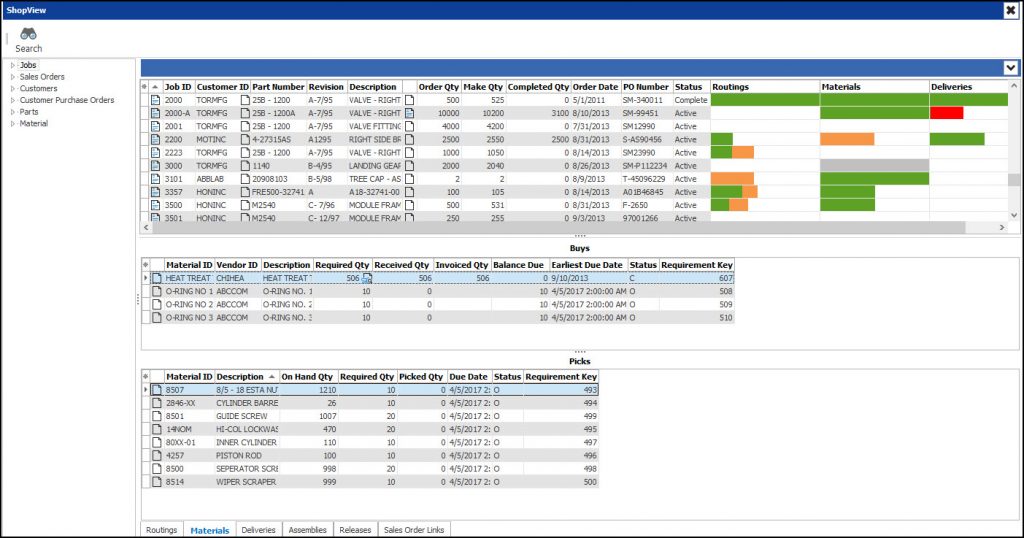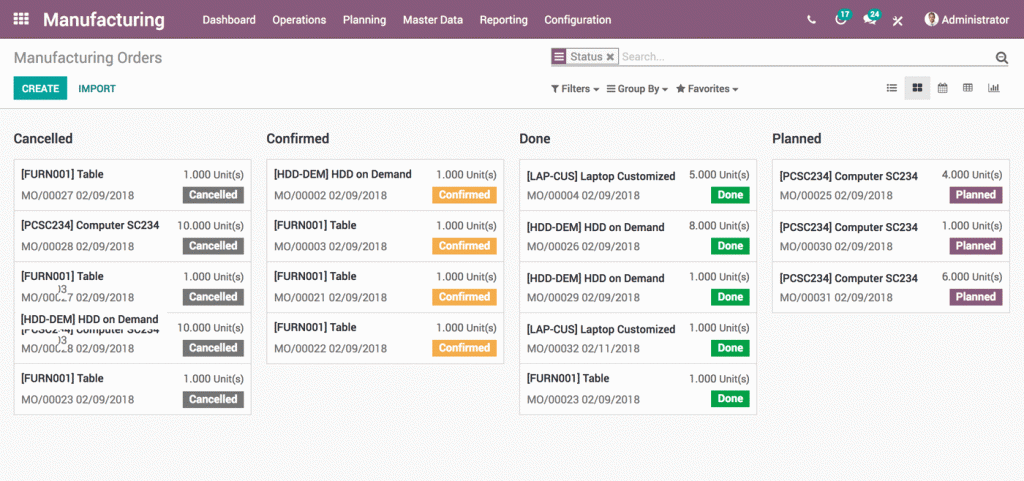Quick summary
- Nowadays, most manufacturing resource planning (MRP) software systems are built into bigger enterprise resource planning (ERP) systems.
- This article examines seven of the best MRP solutions on the market.
Manufacturing resource planning (MRP) software is just one tool that manufacturing business owners and supply chain managers need to stay competitive in today’s demanding world. But since these tools often come as features within enterprise resource planning (ERP) software solutions, it’s easy to overlook or forget about them entirely, meaning you may be missing out on better inventory control, smoother production processes, and lower manufacturing costs.
This article examines seven of the most popular MRP II software systems, most of which come as part of some big names in ERP systems. If you’re still doing preliminary research, read on. Otherwise, feel free to contact us for a free, five-minute, no-hassle software consultation. Our Technology Advisors are standing by, ready to send you a short list of the best software based on your biggest needs.

Leading MRP solutions
Product profiles in depth
NetSuite

Featuring real-time demand planning, visibility across product life cycles, and strong integration with accounting software, NetSuite offers a powerful MRP software tool in the form of its Demand Planning abilities. While NetSuite itself is an ERP solution, it offers a lot of functionality and built-in tools, including many built specifically for the manufacturing industry.
MRP software-specific functionality includes the ability to check inventory control and safety stock levels, review customer demand, and conduct supply planning before generating sales orders. The system is also cloud-based, making it highly scalable and great for advanced planning throughout the entire manufacturing process.
Fishbowl

Fishbowl is an inventory and supply chain management platform that offers MRP software, among other tools. Many users see Fishbowl as an affordable (albeit lighter-weight) alternative to NetSuite’s MRP process. Standout functionalities include QuickBooks integration, personalized customer support, and good reporting features, such as inventory records file reporting for better MRP planning and reporting.
Since Fishbowl was built as an inventory management platform first, it does a very good job of keeping up-to-date and accurate inventory counts. This makes its MRP software offering especially powerful, as you always know your inventory levels, leading to better inventory control, shop floor scheduling, capacity planning, and overall better supply chain management.
IQMS

IQMS is an ERP solution that can be deployed on-premise or in a public or private cloud. Like many other solutions listed here, IQMS is an enterprise resource planning system first, but it offers a competitive MRP software system along with other useful manufacturing and demand forecasting tools.
This MRP software syncs with manufacturer bills of material (BOMs), using data entered by shop floor workers to update raw material requirements and production scheduling. This is a comprehensive MRP system built for larger manufacturing companies, so many users recommend designating an MRP software admin within the manufacturing operation to oversee its processes and to be available for questions or troubleshooting.
Also read: The Difference Between MRP and ERP
JobBOSS

JobBOSS is a manufacturing ERP software that’s great for smaller businesses. It requires a good deal of customization to run properly, but it works well once it gets to know your business. Users love the ability to favorite workflow shortcuts, and the Shop Alerts feature sends automated messages to the right people to keep the manufacturing process running smoothly. These alerts can be customized for a variety of messages and can be sent as emails, text messages, and internal messages within the system.
What’s more, JobBOSS recently announced a partnership with manufacturing software E2 Shop to create JobBOSS2, an entirely separate solution from JobBOSS that offers more robust features and capabilities and an app that offers real-time production and scheduling tracking on the shop floor. Other functionalities include automatically tying purchasing needs to purchase orders, analyzing the profitability of every job in real-time to streamline the manufacturing process, and seeing every process by machine, employee, or time period to stay on course with the master production schedule.
SAP Cloud ERP

As the name implies, SAP Cloud ERP is a cloud-based system, and it includes an MRP. Software developers push updates to the system every three months, and the company is constantly adding to its already-extensive online help library. These help documents are thorough enough to teach a newcomer how to use the software, which makes SAP a popular choice among SMBs.
This software is quite expensive when purchased for enterprise-sized companies, but the freedom for customization it offers is very valuable. SAP’s ERP software tool also offers dependent demand tables, so users can see the dependent demand for component parts, raw materials, or sub-assemblies. This is great from a materials requirement planning standpoint and offers insight into material requirements, allowing users to have the appropriate inventory on hand to keep the master production schedule operating at maximum efficiency.
Infor VISUAL

Infor VISUAL is an order-driven ERP software built for process manufacturing. The system includes an MRP software feature that offers inventory management, safety reports, quality management, and material planning, among other capabilities. Info VISUAL can be difficult to implement, but you can work around this by hiring a software implementation consultant. This system does not offer as much room for customization as a system like SAP Cloud ERP, but it is very easy to learn how to use out of the box.
This manufacturing software aids the production process by enforcing predefined standards throughout manufacturing and the supply chain. Companies are able to determine delivery dates, create “what-if” demand schedules, and secure shop floor capacities in anticipation of customer purchase orders.
Also Read: Ask The Experts: When Should We Hire An Implementation Consultant?
Odoo

Odoo does everything from CRM to sales to HR, but it also offers a market-leading MRP solution. This MRP system lets you organize workflows with Gantt charts and Kanban boards, and predictive demand helps you stay ahead of production needs with intelligent forecasts. While some users have noted problems with learning community documents not being comprehensive or centralized, Odoo is making strides to improve this. For companies with an adequate IT staff or dev ops team, Odoo also offers an open source edition of its software as a free download on its website.
Odoo offers features for inventory requirement and management, traceability reporting, material requirements, and maintenance requests. The demand-driven manufacturing software offers a master production schedule tool to plan your production based on the demand forecast. Process manufacturers are able to see an overview of the production plan and all available resources.
Finding the right MRP software for your business doesn’t have to be so hard.
We know that ERP systems can be behemoths, so we’re standing by to look into specific MRP software for you. Fill out the form on our manufacturing resource planning software page or contact us to get a free, no-hassle short list of the software with the best MRP tools for your business. Getting started is easy and only takes five minutes.





